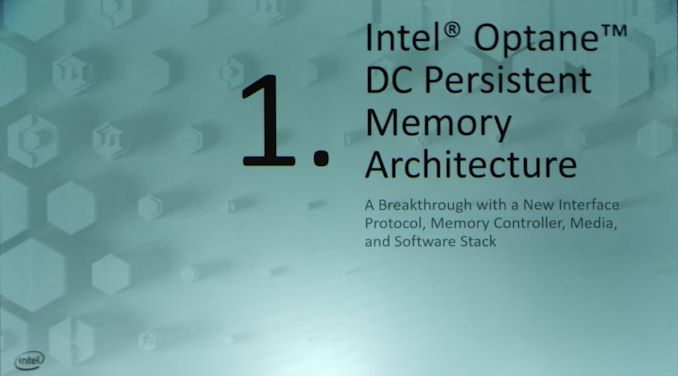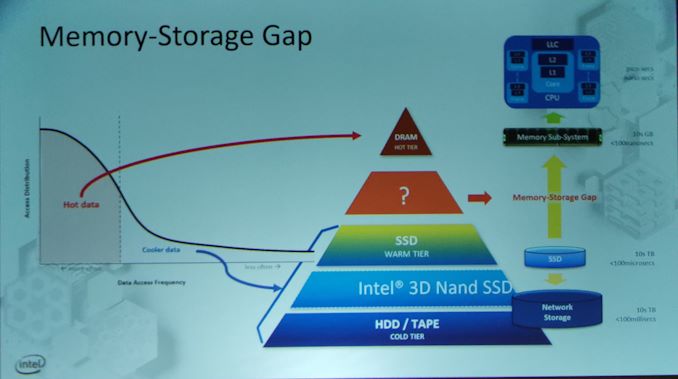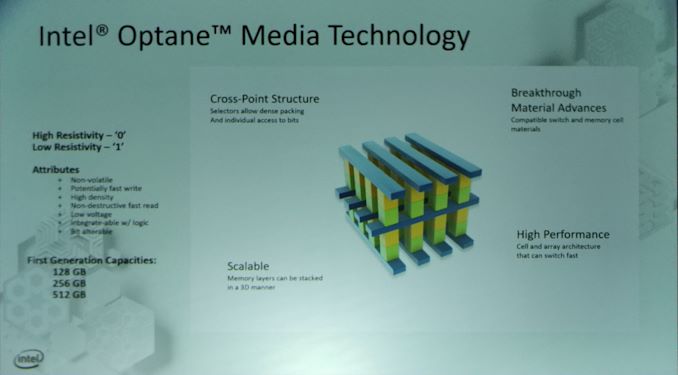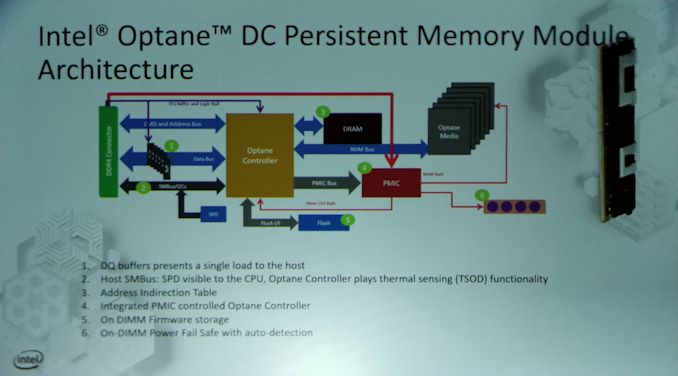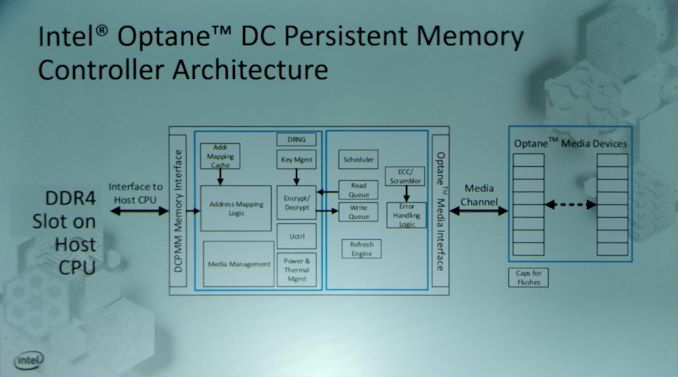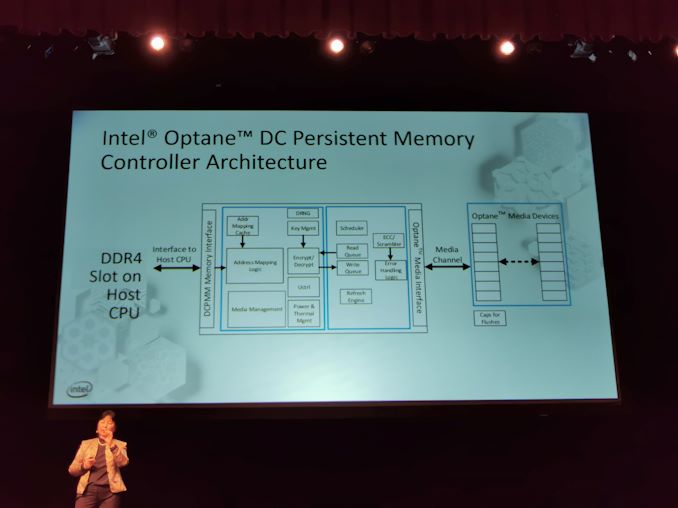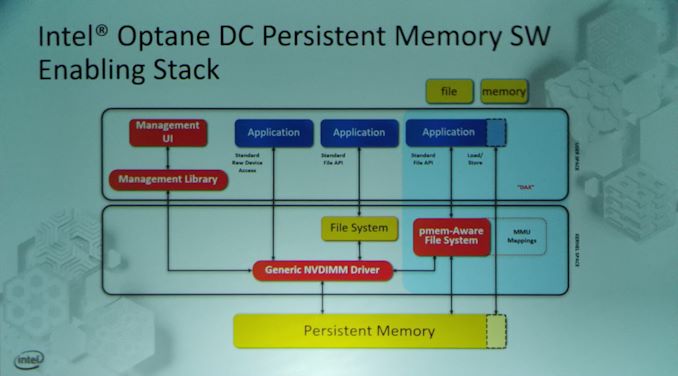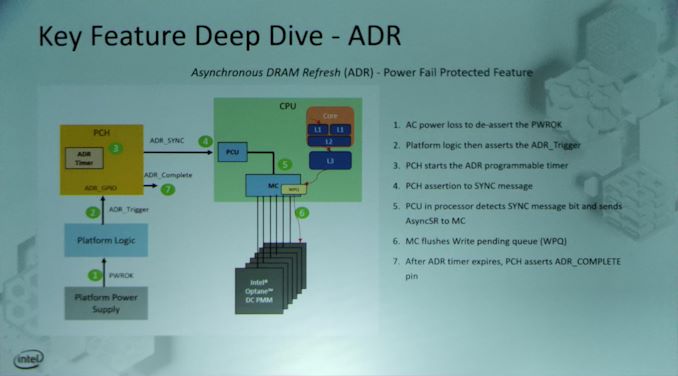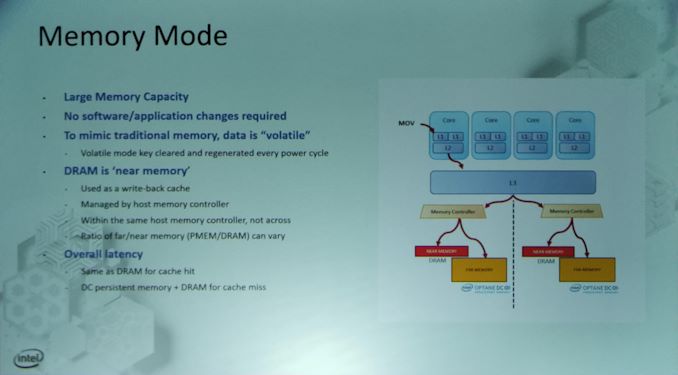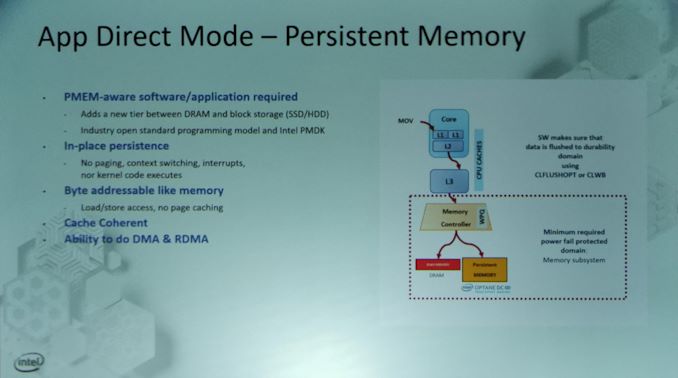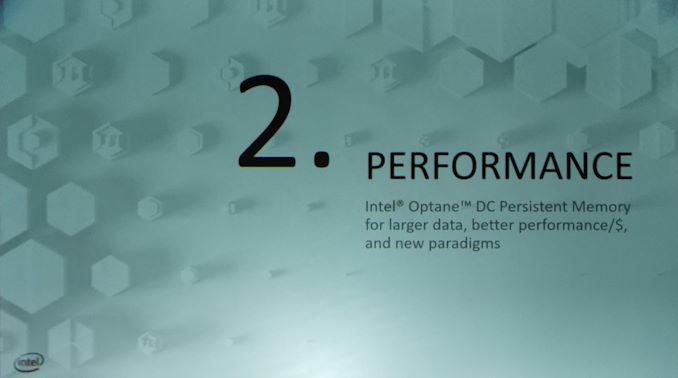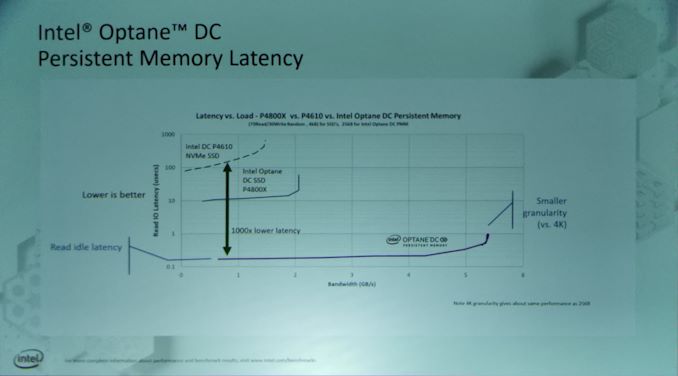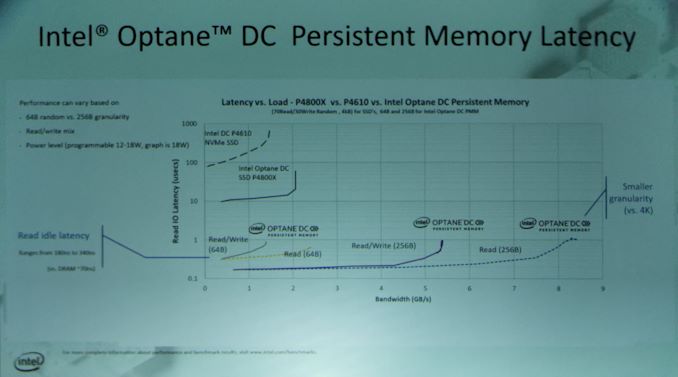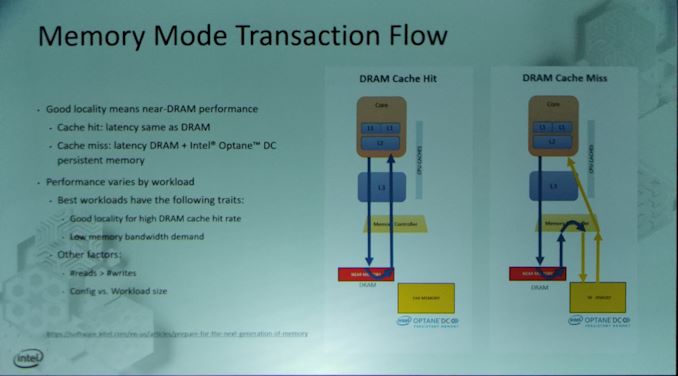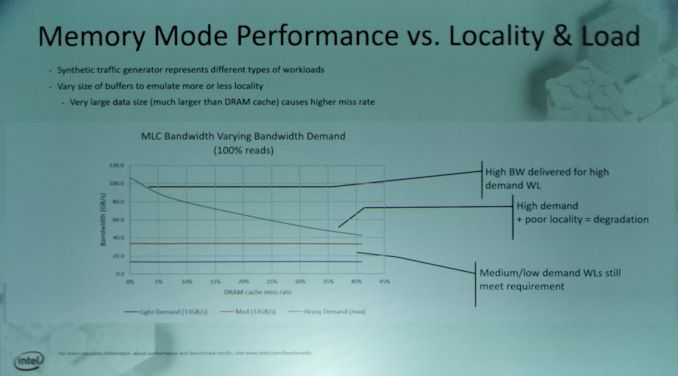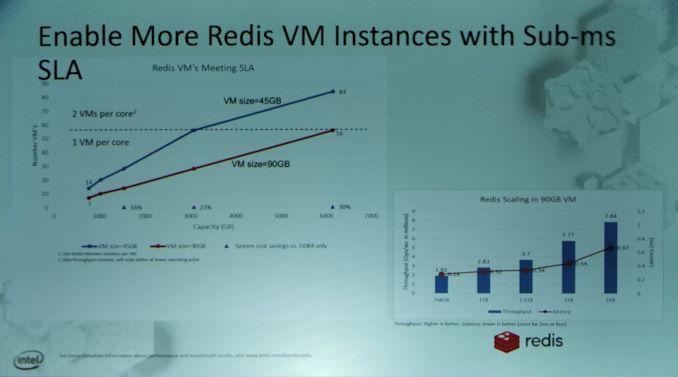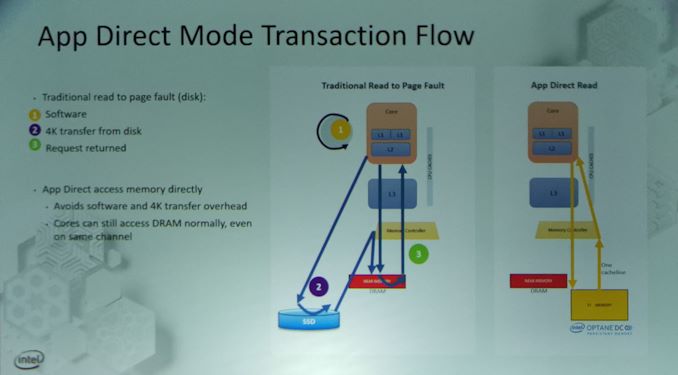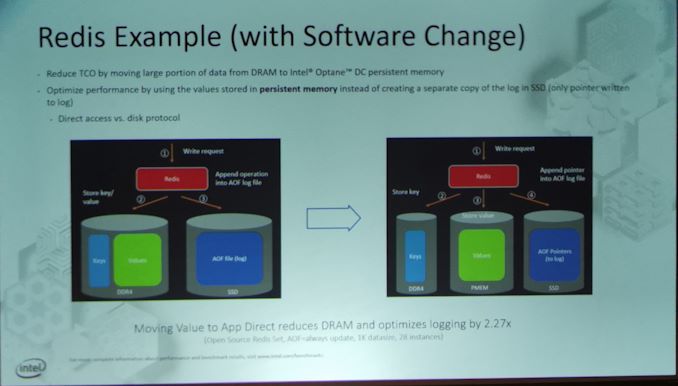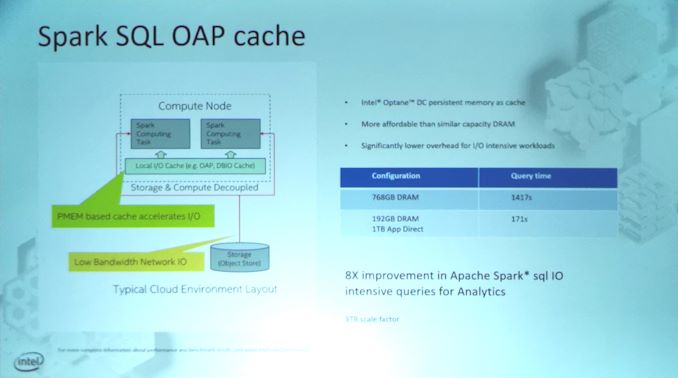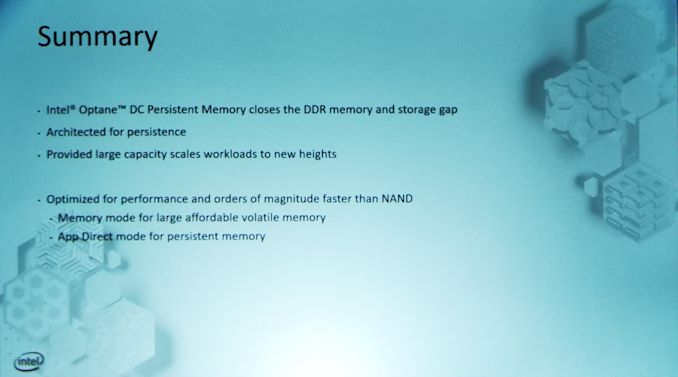
Original Link: https://www.anandtech.com/show/14753/hot-chips-31-live-blogs-intel-optane
Hot Chips 31 Live Blogs: Intel Optane
by Dr. Ian Cutress on August 19, 2019 2:55 PM EST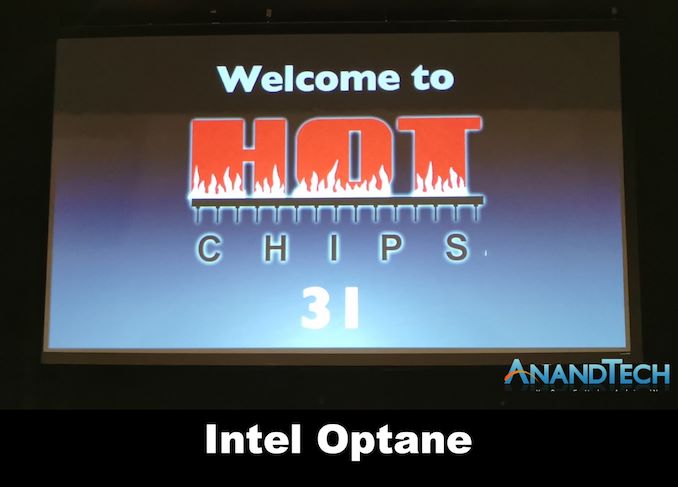
02:55PM EDT - This year at Hot Chips, Intel is presenting the latest updates to its Optane PCDMM strategy.
02:57PM EDT - Intel Optane DC Persistent Memory
02:57PM EDT - The memory-storage gap slide where Optane goes
02:57PM EDT - Oh wow, they've made the same mistake again. This machine doesn't have the Intel font so everything looks off
02:59PM EDT - SSD like capacity to DRAM
03:00PM EDT - We've heard the architecture of Optane before - crosspoint structure, non-voatile, bit-alterable, up to 512GB in first generation
03:00PM EDT - Designed to scale in layers
03:02PM EDT - DRAM module architecture
03:03PM EDT - Sorry the picture is bad, click through for full resolution
03:03PM EDT - Onboard Optane controller with firmware and integrated PMIC
03:04PM EDT - Built in ECC
03:05PM EDT - Two modes, Storage mode or Memory mode
03:05PM EDT - Asyncronous DRAM refresh - power fail protected failure
03:07PM EDT - In memory mode, DRAM is used as a write-back cache and treated like a near memory. Optane is far memory.
03:07PM EDT - Software/App Direct Mode shows the Optane as a storage
03:08PM EDT - Support for DMA and RDMA, cache coherent, byte-addressable, in-place persistance
03:08PM EDT - Now Performance
03:08PM EDT - Latency vs SSD
03:09PM EDT - 100 microseconds for normal SSD vs Optane SSD (10 microseconds) vs Optane DCPMM (0.2 microseconds)
03:09PM EDT - 180 microseconds vs 70 on DRAM
03:10PM EDT - This is a R/W mix of traffic
03:10PM EDT - Read idle latency peaks at 340ns
03:11PM EDT - Memory Mode transaction flow between CPU and DCPMM vs standard
03:11PM EDT - DRAM cache hit vs cache miss
03:12PM EDT - transparent to software
03:13PM EDT - Bandwidth is near DRAM, as you miss there is some degredation
03:14PM EDT - A lot of workloads doesn't require full bandwidth all the time
03:14PM EDT - Up to 6TB in dual socket
03:15PM EDT - Enables consolidation with larger memory per server
03:15PM EDT - Increases virtualized capacity based on memory
03:16PM EDT - Redis examples show under 1ms SLA quality even with max VMs in 6TB setup
03:17PM EDT - App Direct Mode
03:18PM EDT - To take full advantage App Direct, requires software adjustments
03:19PM EDT - In Redis and enabling logging, Moving Value section to App Direct Optane reduces DRAM use and optimizes logging by 2.27x
03:21PM EDT - Q&A time
03:24PM EDT - Q: Spare capacity? There is spare capacity and wear levelling across all chips
03:25PM EDT - Q: Can you bring the Optane on package with CPU? A: It's possible, but not today
03:28PM EDT - Q: Why is 64B a slower latency than 256B? A: Our buffers are based on 256B, so on 64B reads you get buffering which increases latency. If you run at 256B, you get additional benefits from our buffer sizes
03:28PM EDT - That's a wrap. Time for lunch. The next live blog is on MLperf at 3:15pm PT.

